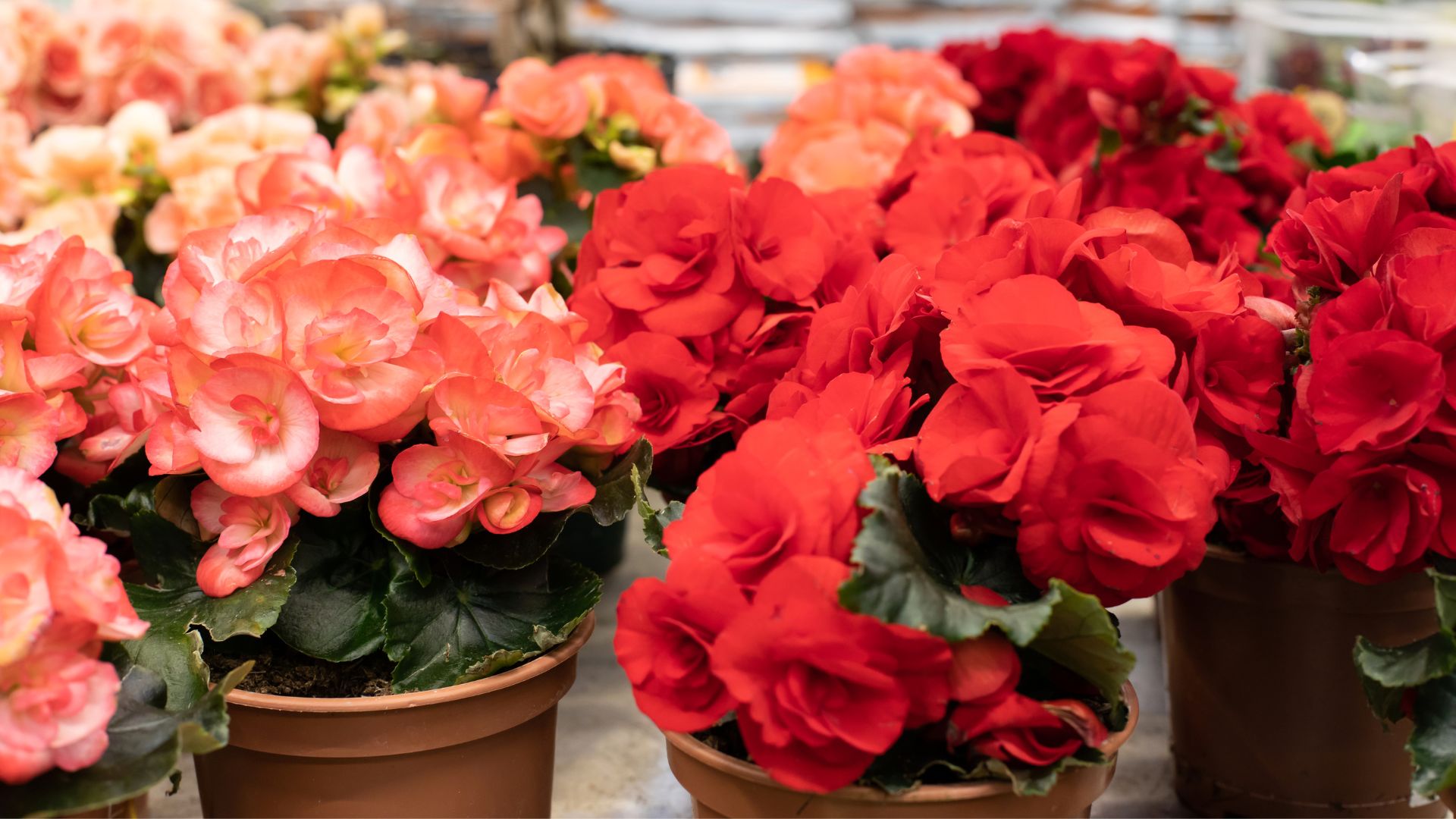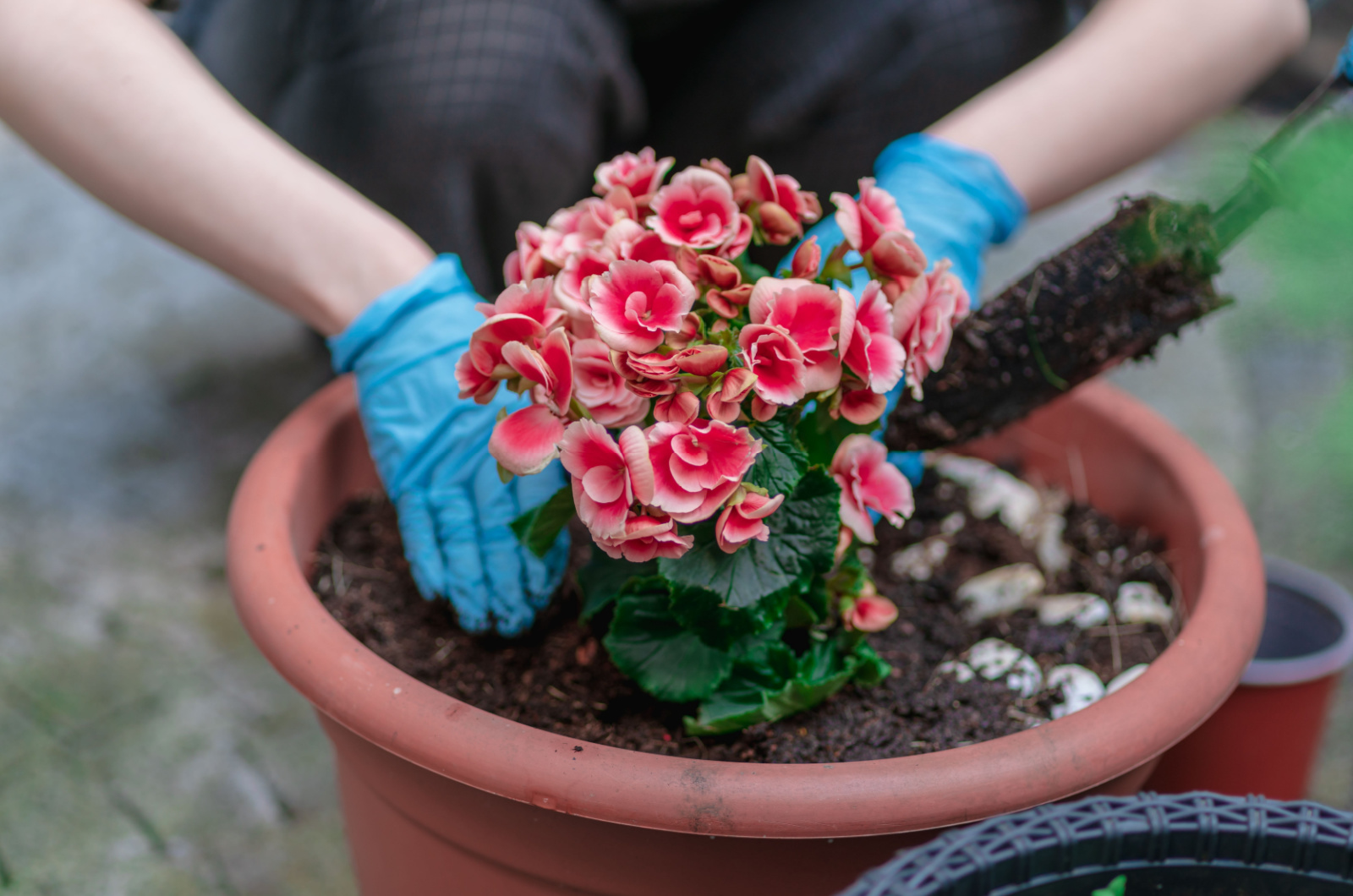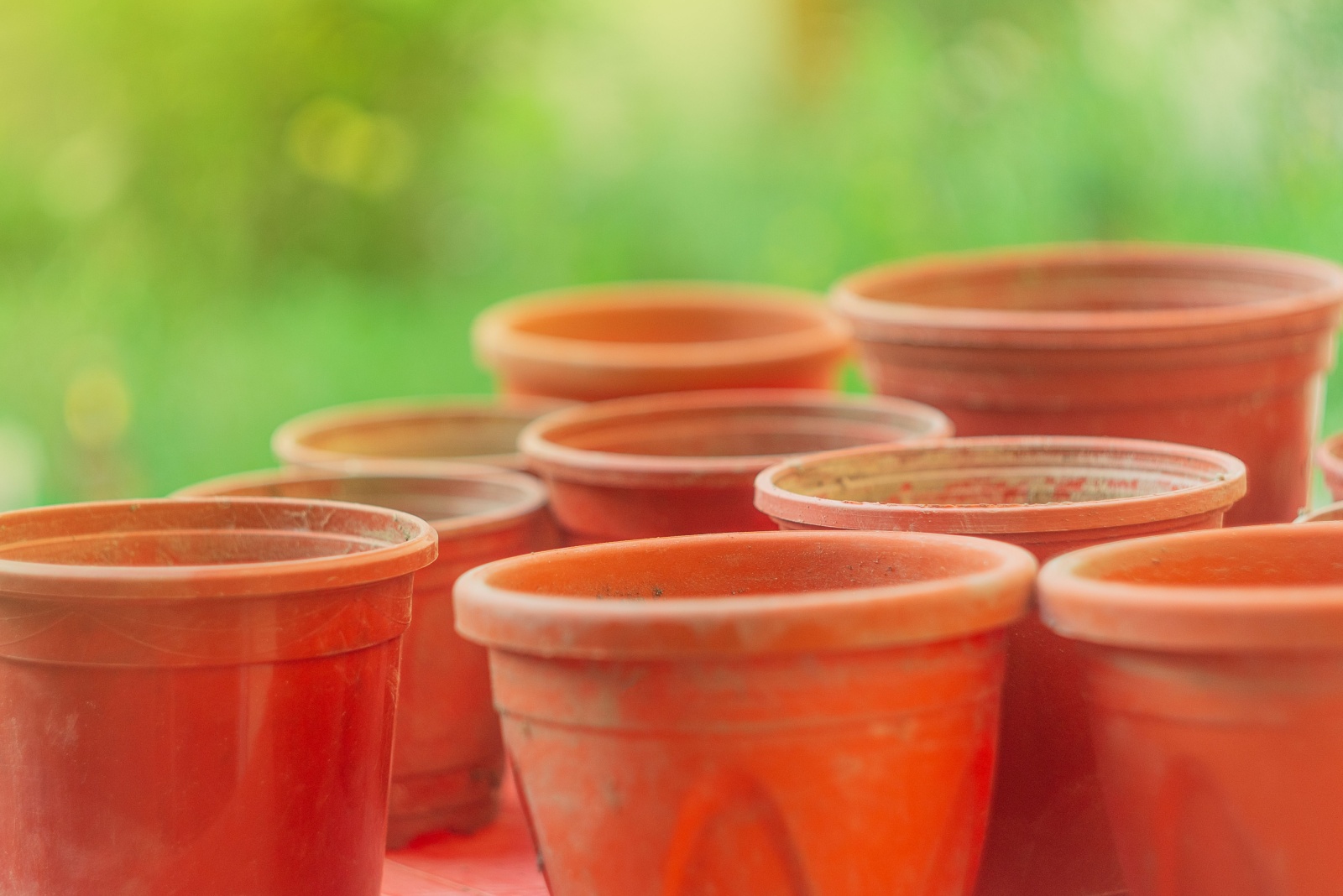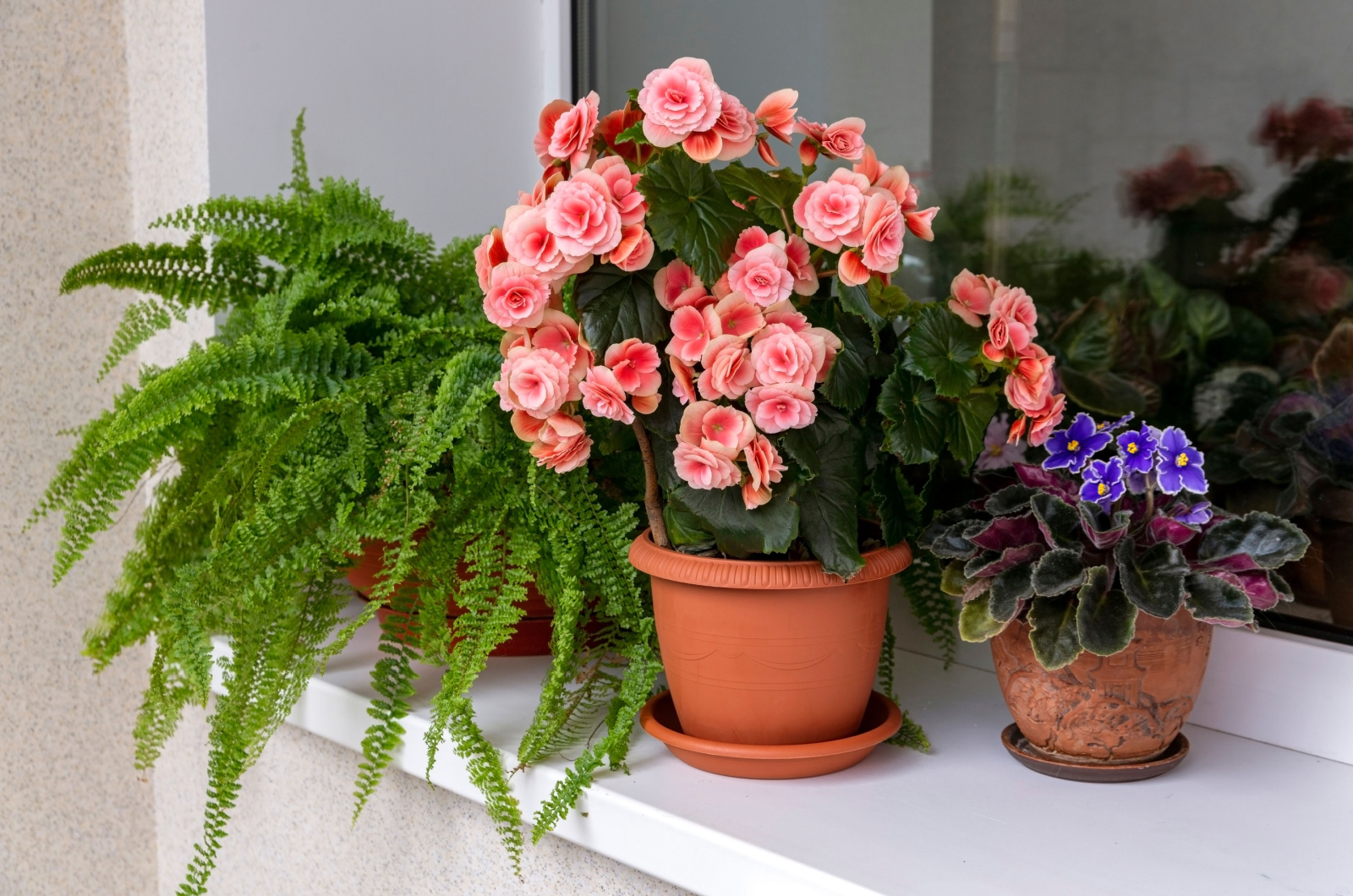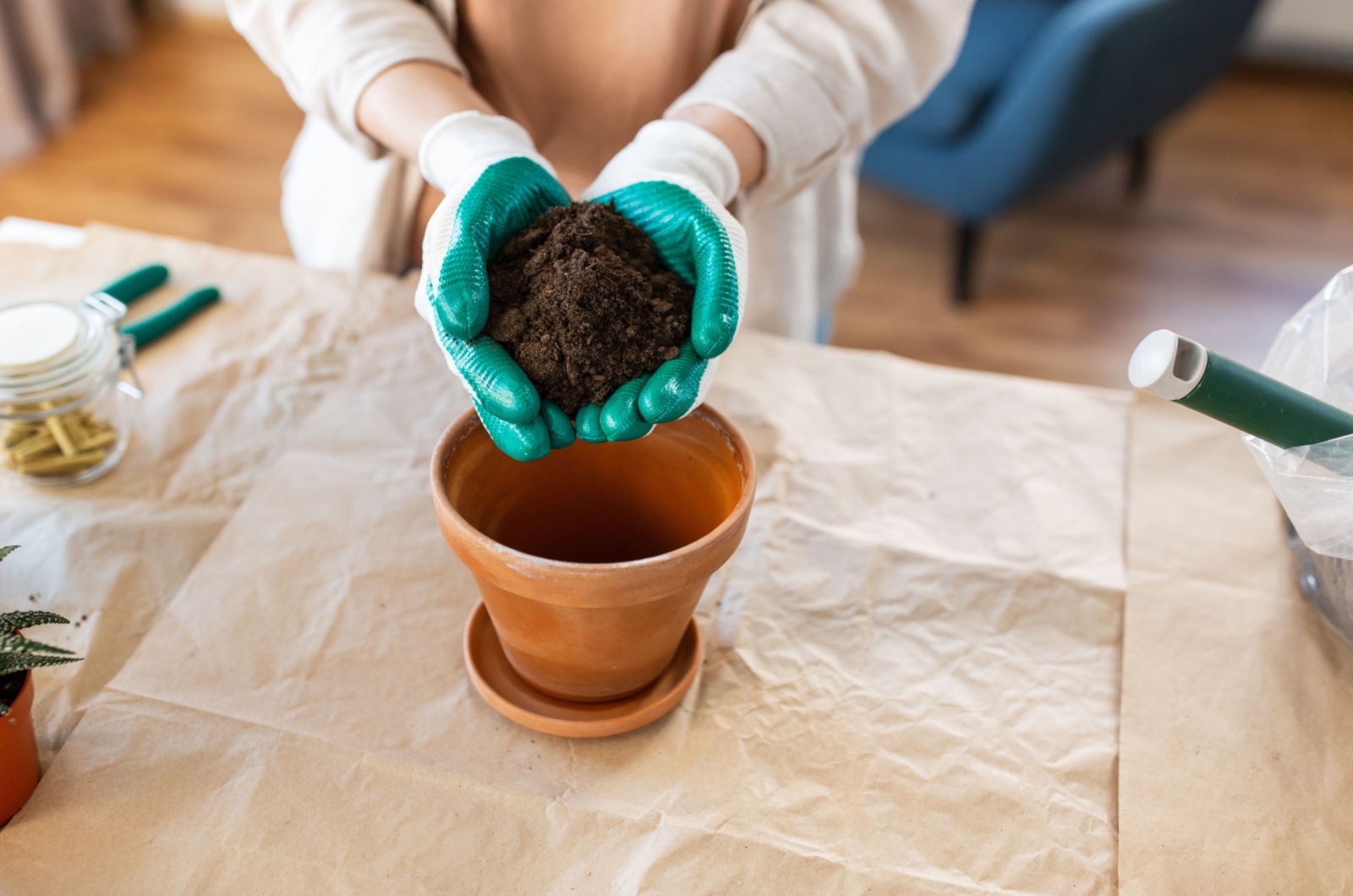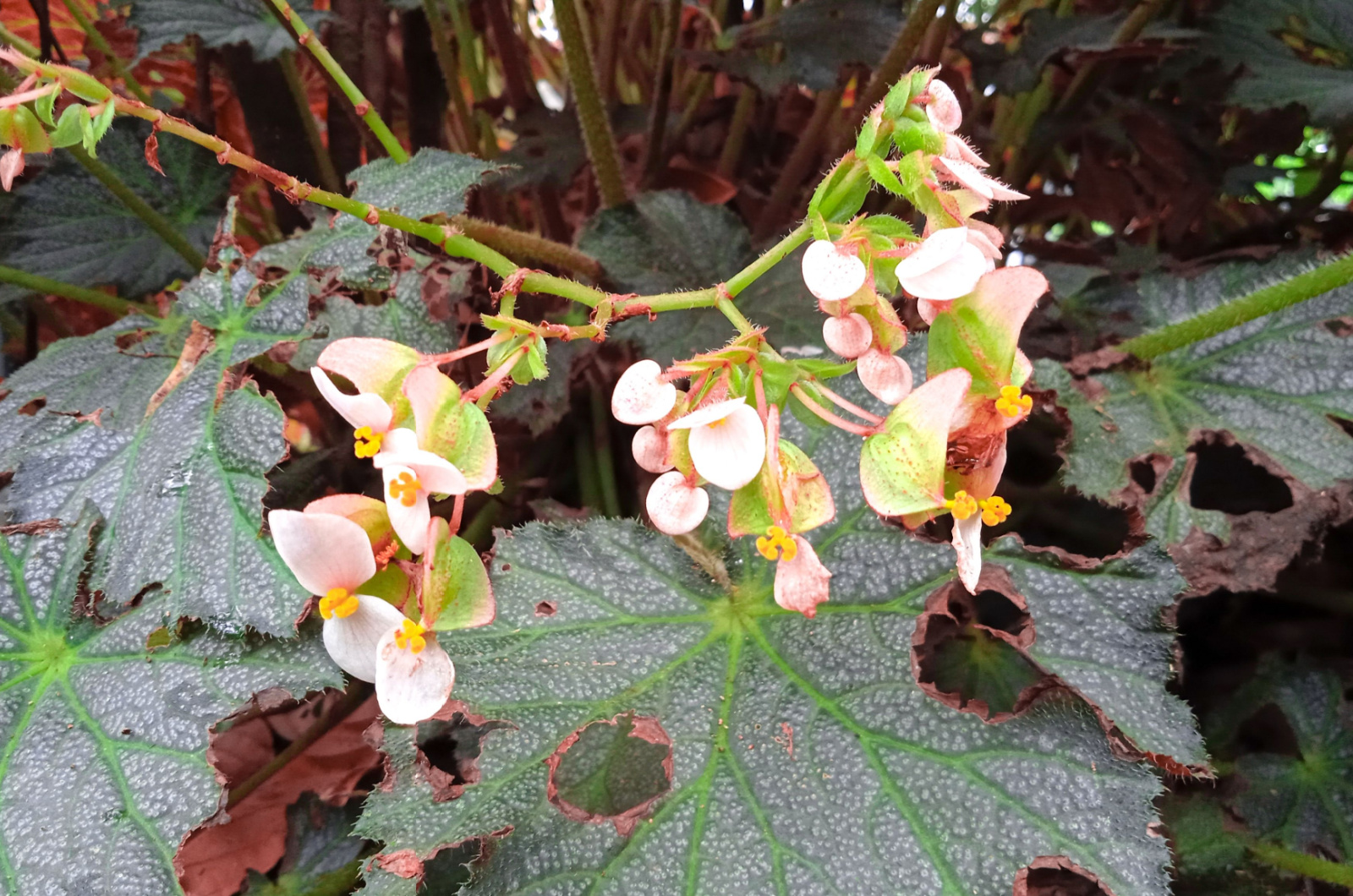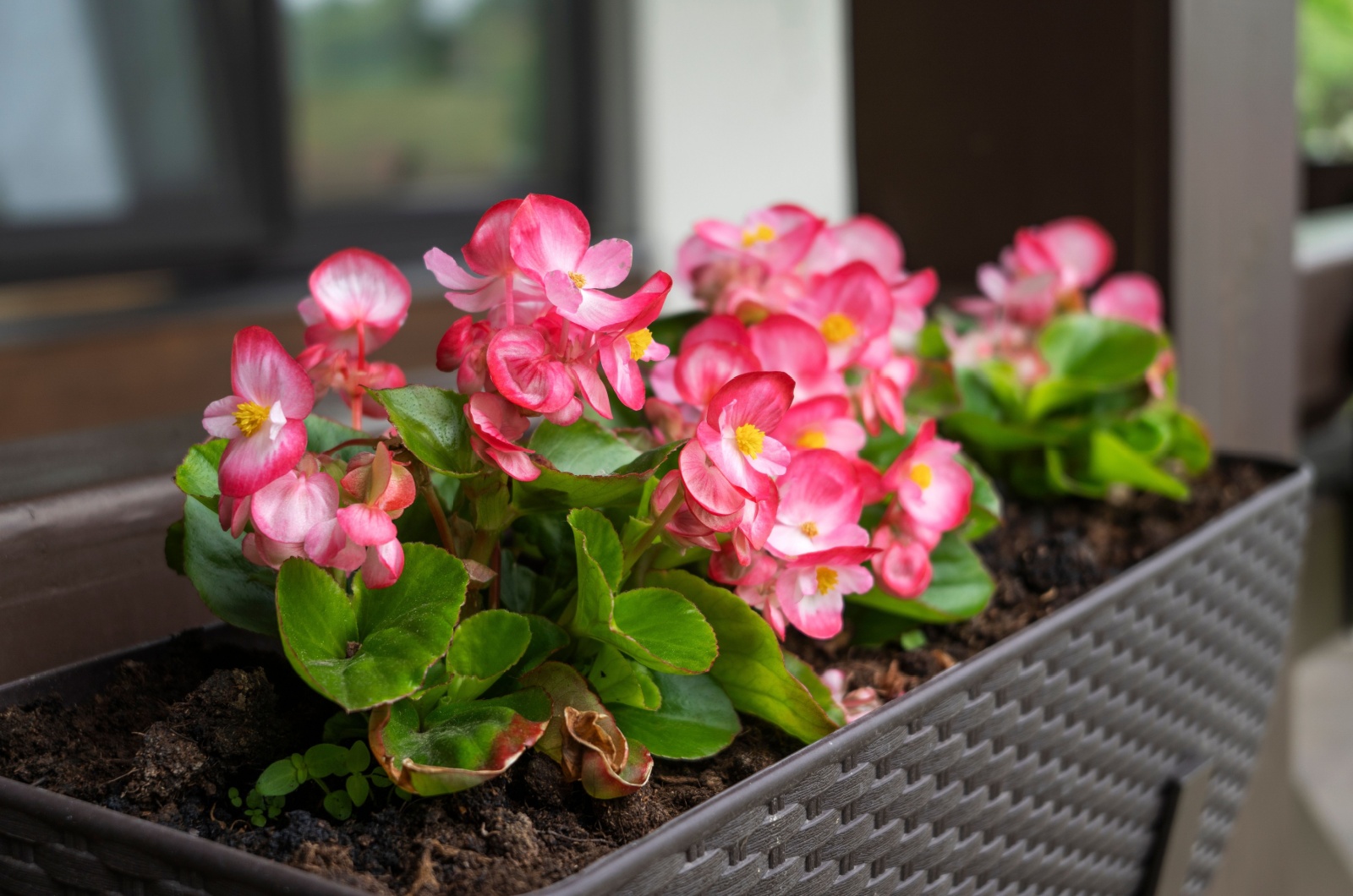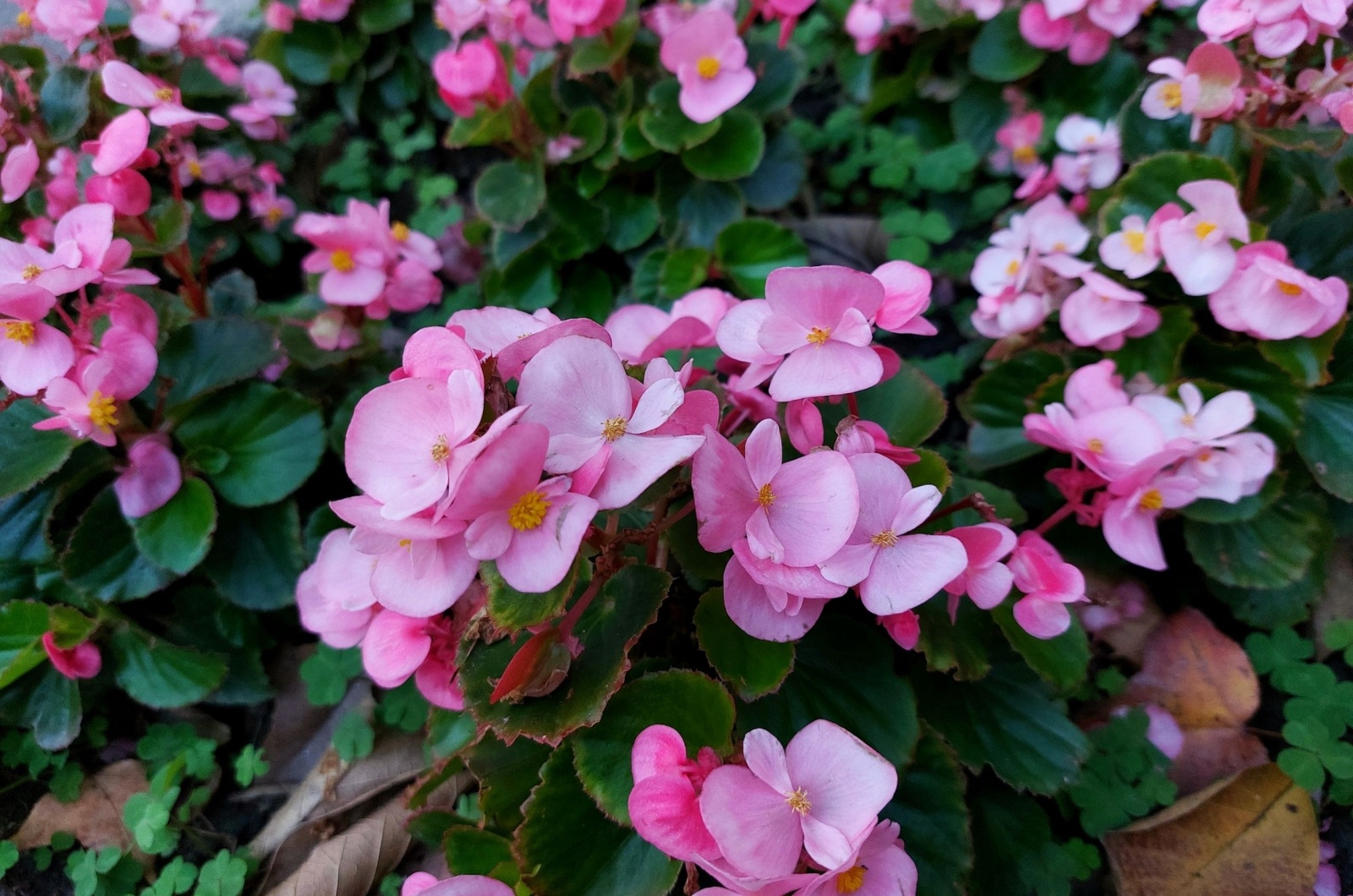Begonias are flowers known to every gardener, whether for their colorful flowers or unique foliage.
They’re incredibly easy to grow, especially in pots, which will be the focus of today’s article.
The key to caring for your potted begonias is first understanding the variety you have, since not all species have the exact same needs.
Then, choose the container, location, and soil wisely, and you’re good to go.
Below, you can find detailed information for all these tips and tend to your potted begonias the right way.
Let’s get started!
1. Understand Your Variety
Begonias come from a genus with over 2,000 species, so it’s only natural that their needs will differ a bit. It’s not the same having rex, Bolivian, and trailing begonias.
Why?
Because their roots differ. In fact, begonias are categorized into three main branches based on their roots:
1. Fibrous-rooted begonias – These begonias only have fibrous roots. Species that belong to this group include wax, cane-like, thick-stemmed, trailing-scandent, and shrub begonias.
2. Rhizomatous begonias – Begonias in this category have both fibrous and rhizomatous roots. Rhizomes are thick underground stems that develop horizontally and grow new sections. This group is considered the largest and mainly includes rex begonias.
3. Tuberous begonias – These begonias are similar to rhizomatous ones, but they have tubers that grow from the same buds, just like potatoes. Plants come in numerous colors, have large ruffled flowers, are favored by gardeners, and thrive in shade.
They include varieties such as Bolivian, hiemalis, and lorraine begonias. (1)
2. Choose The Right Pot
Once you pick your begonia, it is time to find the best planter for it to grow in. When choosing the right size, it’s best to let the seedlings (so-called plugs) be your guide.
One seedling requires a 4-5-inch container. Therefore, if you want to plant two in the same pot, make sure to make room for each seedling and use a pot at least 6 inches in diameter.
As your plant grows and becomes larger and larger, increase the pot size by an inch so that it can accommodate its root system.
Now to the material. Plastic and glazed ceramic planters are some of the most popular ones among begonias because they are affordable, lightweight, and come in a wide variety of sizes. However, they are non-porous and hold much more water than terracotta pots.
Begonias don’t like soggy soils, so it’s best to grow all three categories in terracotta planters.
Of course, you can grow them in plastic or glazed pots if you like, but adjust the watering accordingly.
Finally, whichever planter you choose, make sure it has at least one drainage hole through which the excess moisture can drain.
3. Find The Best Location
To keep your begonias blooming, you need to place them in the best location possible. But not all varieties require the same amount of sunlight.
For instance, fibrous-rooted begonias thrive in full sun or light shade, rhizomatous ones prefer indirect sunlight or gentle morning light, while tuberous begonias can handle deeper shade.
But if you don’t want to think too much about sun exposure, you can place these plants in a location where they get morning sunlight and they will be more than happy.
Just make sure not to expose either rhizomatous or tuberous begonias to too much sunlight because it can scorch their foliage.
Additionally, begonias are native to tropical and subtropical regions and they don’t do well in cold and harsh weather.
In fact, they thrive when daytime temperatures are around 75°F and nighttime ones around 60°F.
And if the temperatures in your region drop below 55°F over night, you should take your begonias indoors over winter.
Of course, dormant tubers can handle much lower temperatures than this, and can survive when exposed to conditions as low as 0°F.
Finally, you should also be careful about the humidity because these tropical plants thrive when the air moisture level is 50% or higher, rhizomatous begonias in particular.
4. Plant Them In A Suitable Soil
Another important factor for growing potted begonias, that can make or break your plant, is the soil.
These plants adore well-drained, loose, and airy soil which allows moisture to drain quickly, prevents compaction, and ensures enough oxygen for the roots to avoid rotting.
Once you plant them in the right growing medium, you can water your begonias every 2-4 days, but always make sure that the top portion of the soil is dry before irrigation.
Choose a substrate that contains bark, coco coir, pumice or perlite, and even vermiculite, since these materials ensure proper drainage, water-retention, and aeration.
You can also go for soils with peat moss, although I’m not a big fan of it because harvesting it isn’t that eco-friendly. However, it will do the same thing as coco coir and benefit your plant growth.
Additionally, you might want to stack up with some fertilizer. These plants don’t require that much, but if you want them to produce gorgeous flowers, apply some slow-release fertilizer once or twice a year.
Balanced fertilizers such as triple 10 or 20 are the best ones for these plants because they give them all the nutrients they need for optimal growth. I prefer fertilizer spikes, but you can use liquid plant food and apply it according to the manufacturer’s instructions.
Warning: When using liquid fertilizers, always dilute them to at least half-strength or even more and slowly increase the concentration if you see that your plants can handle it.
5. Keep Pests Away
If you have an angel wing begonia or any other variety, you’re bound to find pests on them, especially if they’re not kept in ideal conditions.
Some common insects that attack them include aphids, mealybugs, and spider mites. Luckily, you can get rid of them with organic insecticides, horticultural oils, and miticides (for mites).
You can also use rubbing alcohol for mealybugs, especially their eggs. However, be careful not to touch your plant’s foliage because alcohol can damage it.
6. Maintenance Is The Key
Maintain your begonias well and they’ll reward you with numerous flowers and longevity.
I’m talking about deadheading spent flowers to encourage your plant to produce a new flush of blossoms.
And don’t forget pruning! You don’t have to do anything extensive, but removing dead, dying, discolored, diseased, and damaged leaves will keep your plant healthy. This way, it will be able to redirect its energy into producing new and healthy growth.
Final Thoughts
If you have a Begonia maculata (or any other variety), you’ll be glad to hear how easy it is to care for them in pots.
Focus on a suitable pot, location, and soil for your species, and your plant will thrive and give you little-to-no headaches.
References:
1. Ginori, J., Huo, H., & Warwick, C. R. (2020). A Beginner’s Guide to Begonias: Classification and Diversity. UF IFAS Extension.

